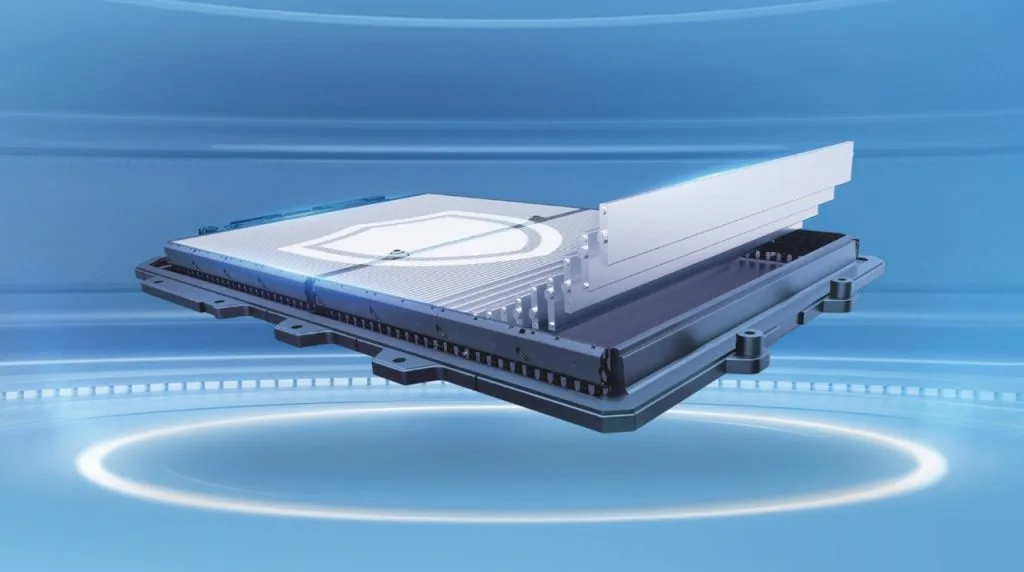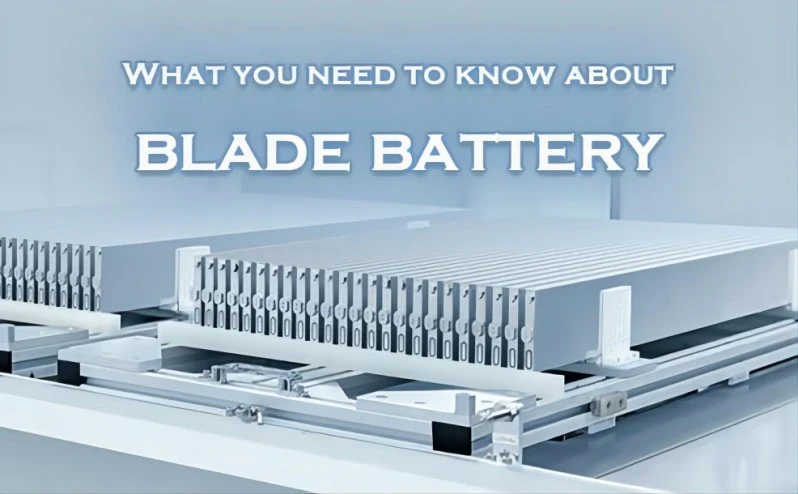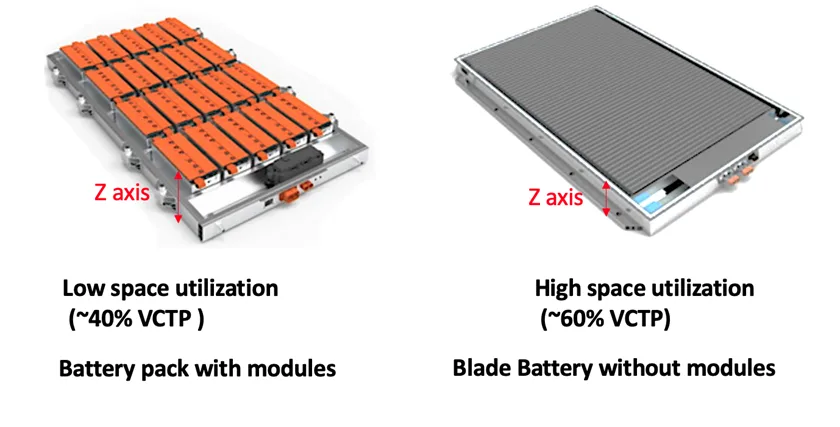As I stood on the factory floor of BYD’s sprawling Shenzhen facility, the rhythmic hum of machinery and the sharp scent of electronics in the air, I couldn’t help but feel I was witnessing the birth of an energy revolution. Rows upon rows of sleek, compact Blade Batteries rolled off the production line, each one a testament to human ingenuity and our collective drive towards a sustainable future.
“This isn’t just another battery,” explained Dr. Li Wei, BYD’s head of R&D, his eyes gleaming with pride. “What you’re seeing is the future of energy storage – safer, more efficient, and capable of powering everything from your smartphone to entire cities.”
Indeed, the numbers speak for themselves. The Blade Battery market, currently valued at a modest $54 million, is projected to skyrocket to an astounding $508.2 million in the coming years. This represents a compound annual growth rate (CAGR) of 38.5% – a figure that has investors and industry insiders buzzing with excitement.
But what’s driving this explosive growth? Let’s dive into the heart of the Blade Battery revolution.
BYD’s Blade Battery capturing the EV Market like Never Before
The Perfect Storm: EVs, Renewables, and Technological Leaps
The surge in Blade Battery demand isn’t happening in isolation. It’s the result of a perfect storm of factors converging at just the right moment:
- The EV Revolution: With global automakers pledging billions towards electrification, the need for high-performance, safe batteries has never been greater. Blade Batteries, with their impressive energy density and thermal stability, are positioning themselves as the go-to solution for next-generation electric vehicles.
- Renewable Energy Integration: As solar and wind power generation continue to grow, so does the need for efficient energy storage solutions. Blade Batteries are proving to be ideal for grid-scale storage, helping to smooth out the intermittency issues associated with renewable sources.
- Technological Advancements: Continuous innovation in battery chemistry and manufacturing processes is driving down costs while improving performance. This makes Blade Batteries increasingly competitive across a wide range of applications.
- Safety First: After high-profile incidents involving traditional lithium-ion batteries, the enhanced safety features of Blade Batteries are particularly appealing to both manufacturers and consumers.
- Government Support: Stricter environmental regulations and incentives for clean energy adoption are creating a favorable landscape for Blade Battery technology.
“We’re seeing interest from sectors we never even considered five years ago,” shared Sarah Chen, a market analyst at EV Insights. “From aerospace to marine applications, the versatility of Blade Batteries is opening up entirely new markets.”

By the Numbers: The Blade Battery Market in 2025
To truly grasp the scale of this market transformation, let’s break down some key figures:
| Metric | 2024 | 2025 (Projected) | Growth |
|---|---|---|---|
| Market Value | $54 million | $74.79 million | 38.5% |
| EV Integration Rate | 15% | 22% | 46.7% |
| Grid Storage Capacity | 2.5 GWh | 4.1 GWh | 64% |
| Production Facilities | 12 | 18 | 50% |
| R&D Investment | $1.2 billion | $1.8 billion | 50% |
These projections paint a clear picture of an industry on the cusp of exponential growth. But what does this mean for consumers, businesses, and the environment?
Beyond the Hype: Real-World Impact of Blade Batteries
To understand the true significance of this market boom, I spoke with early adopters across various industries. Their experiences offer a glimpse into the transformative power of Blade Battery technology:
Elena Rodriguez, Fleet Manager for GreenCity Logistics:
“We switched our entire delivery fleet to EVs equipped with Blade Batteries last year. The difference has been night and day. Longer range, faster charging, and we haven’t had a single safety incident. Our operational costs have dropped by 23%, and our drivers love the improved performance.”
Dr. Amir Patel, Lead Researcher at SunStore Energy Solutions:
“For our large-scale solar projects, Blade Batteries have been a game-changer. We’re able to store and distribute energy more efficiently than ever before, which means we can provide stable power even when the sun isn’t shining. It’s making renewable energy a much more viable option for communities around the world.”
Captain Yuki Tanaka, Electric Ferry Operator:
“We were skeptical about using electric propulsion for our ferry service, but the Blade Batteries have exceeded all expectations. They’re incredibly reliable, even in harsh marine conditions, and the reduced environmental impact has been a huge selling point for our eco-conscious passengers.”
These real-world applications demonstrate the versatility and reliability of Blade Battery technology. As production scales up and costs continue to decrease, we can expect to see even more innovative uses emerge.

The Road Ahead: Challenges and Opportunities
While the future looks bright for the Blade Battery market, it’s not without its challenges. As I toured BYD’s research facilities, Dr. Li Wei shared some of the hurdles they’re working to overcome:
- Raw Material Supply: “Securing a stable supply of key materials like lithium and cobalt is crucial. We’re investing heavily in recycling technologies and exploring new, more abundant materials to ensure we can meet demand.”
- Charging Infrastructure: “For EVs to truly go mainstream, we need a robust charging network. We’re partnering with governments and private companies to accelerate the rollout of fast-charging stations compatible with Blade Batteries.”
- Education and Awareness: “There’s still a lot of misinformation out there about battery technology. We’re committed to educating consumers and businesses about the benefits and safety of Blade Batteries.”
- Regulatory Landscape: “As a rapidly evolving technology, we’re working closely with regulators around the world to ensure our batteries meet or exceed all safety and performance standards.”
Despite these challenges, the opportunities presented by the Blade Battery market are immense. From job creation in manufacturing and research to the potential for significant reductions in carbon emissions, the ripple effects of this technology are set to transform multiple industries.

Looking to the Future: What’s Next for Blade Batteries?
As our tour of the BYD facility came to an end, I couldn’t help but ask Dr. Li Wei about what the future holds for Blade Battery technology. His response was nothing short of inspiring:
“We’re just scratching the surface of what’s possible. Our next-generation Blade Batteries, set for release in 2026, will offer even higher energy density and faster charging capabilities. We’re also exploring new form factors that could revolutionize product design across multiple industries.”
With major players like Tesla, CATL, and Panasonic also investing heavily in advanced battery technologies, the competition is fierce. This rivalry is driving innovation at an unprecedented pace, promising even more exciting developments in the years to come.
As I left the BYD campus, the weight of a Blade Battery prototype in my hand, I couldn’t shake the feeling that I had just glimpsed the future. A future where clean, efficient energy storage powers our world, from the smallest devices to the largest cities. The Blade Battery market isn’t just booming—it’s reshaping our relationship with energy itself.
Also Read: Tata Nexon vs MG Windsor Comparison: Detailed Guide in 2025
Frequently Asked Questions About the Blade Battery Market
What exactly is a Blade Battery?
A Blade Battery is a type of lithium iron phosphate (LFP) battery known for its high energy density, improved safety features, and long lifespan. Its unique design allows for more efficient use of space and better thermal management compared to traditional lithium-ion batteries.
How do Blade Batteries differ from traditional lithium-ion batteries?
Blade Batteries offer several advantages over traditional lithium-ion batteries:
->Improved safety with better thermal stability
->Higher energy density, allowing for more compact designs
->Longer lifespan with more charge cycles
->Faster charging capabilities
->More environmentally friendly materials
Why is the Blade Battery market growing so rapidly?
The explosive growth is driven by several factors:
->Increasing demand for electric vehicles
->Growing need for efficient energy storage in renewable energy systems
->Advancements in battery technology improving performance and reducing costs
->Stricter environmental regulations favoring clean energy solutions
->Expanding applications across various industries beyond automotive
Some of the leading companies in the Blade Battery market include:- BYD Company Ltd.
- Contemporary Amperex Technology Co., Limited (CATL)
- LG Energy Solution
- Tesla, Inc.
- Panasonic Corporation
- What industries are adopting Blade Battery technology?
Blade Batteries are finding applications in various sectors:- Automotive (electric vehicles)
- Renewable Energy (grid storage)
- Consumer Electronics
- Aerospace
- Marine
- Industrial Equipment


